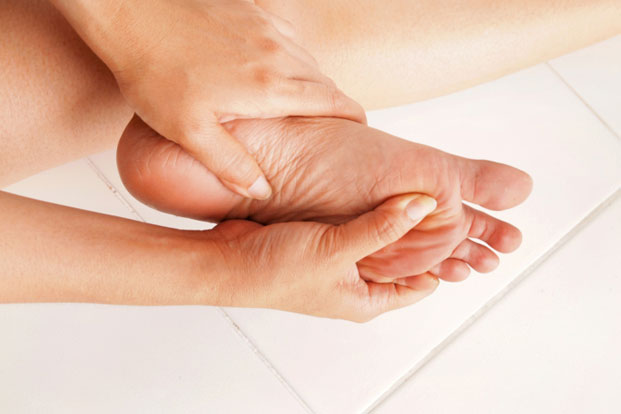Fungus is a type of organism found on every human body. Most of the time it’s harmless, but when it’s not, it’s termed a fungal infection.
Most people will have one or more fungal infections in their lifetime. While most are easily treated and not dangerous, serious fungal infections like histoplasmosis, coccidioidomycosis and paracoccidioidomycosis can develop into major health problems.
These fungal infections are mostly confined to different regions in the world — for example, blastomycosis is found in Africa and parts of the eastern and central United States.
5 Common Fungal Infections
Here are five types of the most common fungal infections found on different parts of the body:
1) Tinea: This is an infection of the skin, nails or hair. When found on the skin, tinea is a small, pea-sized red area. But once it spreads, it becomes to resemble a ring or circle. This is sometimes referred to as ringworm, because it resembles a ring of tiny worms under the skin. The tinea infection is named for the location of the body part it invades – for example, scalp ringworm.
2) Athlete’s foot – This infection is red and extremely itchy and appears between the toes when moisture and warm conditions allow it to spread. It also can appear on the bottom and sides of the feet or in toenails. Wearing dirty, sweaty socks or walking barefoot in shared common areas that are moist and warm, like gym showers, can cause the infection.
3) Jock itch – This fungus appears on the groin and upper thighs and occurs for the same reasons that athlete’s foot appears – warm, moist conditions cause it to thrive. It’s found in both men and women, despite the name.
4) Candida – A yeast infection around the nails or body openings. Babies get it (diaper rash) and pubescent girls and women may have it around the vagina.
5) Pityriasis versicolor – This is a rash that appears on the chest.
Those who have weakened immune systems are particularly at risk of serious complications if a fungal infection develops. If you’re undergoing chemotherapy, or taking corticosteroids or anti-rejection drugs, fungal infections are particularly dangerous of getting out of control.
Also at major risk for complications are those with diabetes, HIV/AIDS, bad burns that have stripped the outer layers of skin, leukemia patients, those fighting kidney disease, patients with lung disorders, and those with Hodgkin’s lymphoma or other lymphomas.
Because the immune systems are already engaged in a struggle, adding a fungal infection overloads the system.
Ideal Conditions for Fungal Infections
For infections to flourish, they need the right conditions. Thus, showers, locker rooms, schools and close personal contact can cause them to spread from peer to peer. If you share a comb, visit a public pool with a locker room or don’t wear clean clothes every day, you are creating the warm, dark and moist conditions needed for fungi to thrive. Some antibiotics can bring on a rash because they kill off some of the beneficial bacteria on the body that fight with yeast for places to live. Rashes can develop because of an immune system disorder, but this is much rarer than simply being in the wrong place under the right conditions.
Identifying a Fungal Infection
Because fungal infections can resemble other skin problems, a formal diagnosis from a medical professional is needed to diagnose and treat the problem. But some general signs can be a solid indicator of an issue.
1) Athlete’s foot – Red, cracked, dry and itchy skin between toes is the leading indicator. Some people develop red, scaly bumps with pus along the bottom and sides of the feet.
2) Jock itch – This is a rash that has edges on it, resembling a wound scab. It is itchy and often can feel like the skin is burning.
3) Ringworm – It’s easy to mistake this for dandruff or a pimple, but as it gets larger, the hair can become brittle and break, causing bald patches on the scalp.
4) Candida – The afflicted area will itch, and in some cases, become swollen and red, making for a very uncomfortable region that will usually be aggravated while wearing clothes.
5) Pityriasis versicolor – These develop as pale patches on the skin, found on the upper arms, chest, shoulders, neck, back and sometimes migrating to the face. This is usually found in teenagers.
Curing a Fungal Infection
When visiting the doctor for a formal diagnosis, a small sample may be obtained from the irritated region so that a culture can be produced. When the infection is identified, then the right kind of antifungal shampoos, creams and oral medications can be prescribed. It is important to take the entire dosage, even if the rash appears to be gone.
Fungal infections are best avoided by practicing rigorous hygiene. Make sure to dry thoroughly between toes and in other hard-to-reach body crevices after showering, and wear sandals or shower shoes when in locker rooms and other public places twhere moist conditions prevail. Always change socks, undergarments and athletic gear when they become sweaty, even if it requires several changes a day. Medicated pads or powders also can help ward off infections.
Women can best fight yeast infections by changing wet bathing suits right after use and by making sure underwear is clean and dry. As for pityriasis, clean and dry is the watchword. Frequently changing t-shirts and other gear when sweaty and using medicated shampoos at least once a month will help fight this infection.
For most, fighting a fungal infection is more of a nuisance than anything serious. Treat it with care, take rudimentary precautions, wear clean clothes, and most issues can be avoided.

Leave a Reply